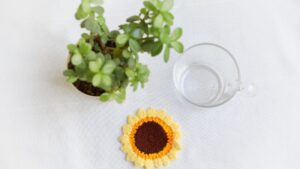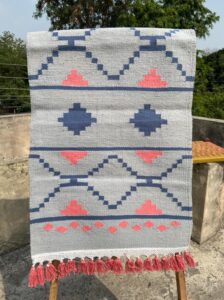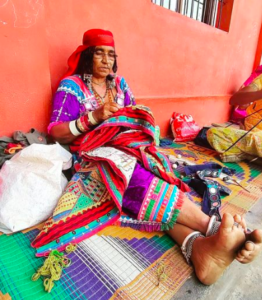These days, the word trousseau brings to mind elaborate lehengas and/or a celebrity getting married in a secret location.
While much of the idea of “carrying things from back home” may be lost in the modern urban context, there is always an element of “home” that men and women miss after they start a life together.
Handicrafts, and the making of them, served an important purpose: that of a community for women. While weaving a dhurrie, women chatted and complained and solved issues (and to be sure, gossiped). These were crafts that the women practiced, and many a time, it was a backup livelihood plan for the women.
Here are some crafts that were traditionally part of the bride’s trousseau, or what the bride’s family showcased at the wedding (never mind if the bride didn’t actually make them!)
- Goan crochet items were traditionally part of a bride’s dennem. While such practices are not prevalent anymore, typical crocheted items a woman took to her marital house included doilies, purses, and table runners, etc. A bride may also take a few gifts with her to gift her in-laws and friends in her new home. Check out our crochet coaster here.

Crochet coaster by Goan handicraft cluster
- Punja dhurries, so named because of the claw (punja)-like tool used to beat the thread in place in the weave, was the staple of most Punjabi and Haryanvi households. Dhurries were traditionally woven by the women in their courtyard, and a woman traditionally wove her dhurrie, which doubles up as a floor mat, to her new home. Now, organizations like Sabtera have given the weave a new lease of life by repurposing smaller items from the dhurrie. Shop for our products here.

Punja Dhurries by Sabtera
- Maharashtrian brides, in days gone by, would prepare items to display in the “rukhwat”, a tradition where varied articles would be displayed during the wedding. These could be crocheted work, embroidery, or paintings, etc. This has now given way to professionally arranged rukhwat.
- The Chamba Rumal (handkerchief) from the Chamba region of Himachal Pradesh, is an intricate embroidery craft that was initially practiced by the royal ladies, and which made its way to the common man, was exchanged between the wedding parties and was part of many ceremonial offerings. The craft has come to disuse, and is in serious danger of dying out.

Traditional Chamba Rumal, Cleveland Museum of Art, CC0, via Wikimedia Commons
- Lambani Embroidery: The Lambani craft, characterized by the use of varied bright cloth and a combination of patchwork, embroidery, mirror work, and shells are a treat to sore eyes, and is used for weddings. While the bridal dresses are elaborate and feature a variety of stitches, these days, bags made using Lambani embroidery are very popular.

Lambani artisan at work, picture courtesy Sandur Kushala Kala Kendra
With traditional crafts taking centre-stage, perhaps it is now time for men to show off their handicraft skills!
Do you remember any handcrafted item from a trousseau (yours or your mother’s)?
(Banner image: By Sheebamadanloewinger via Wikimedia Commons)

